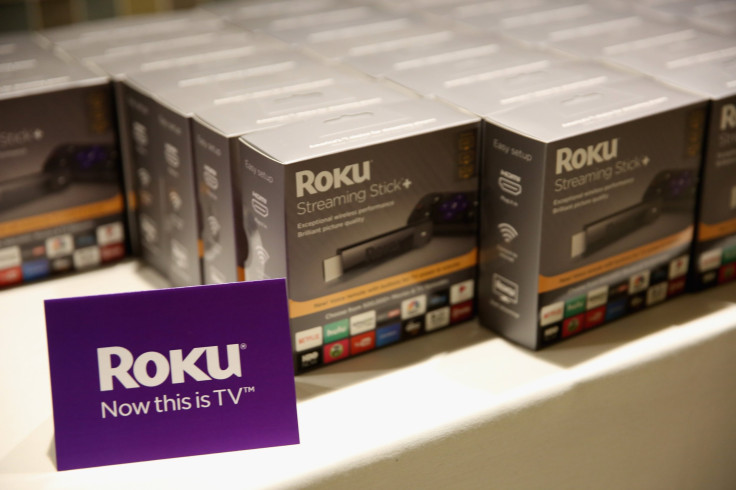Roku Expects To Be A Billion-Dollar Company This Year

There was a lot for investors to cheer about in Roku's (NASDAQ:ROKU) fourth-quarter earnings report. The company beat expectations on both the top and bottom lines, but the company's outlook for 2019 may have investors even more excited.
Roku expects to bring in revenue of $1 billion to $1.025 billion for 2019. Wall Street analysts' consensus estimate was $985 million before Roku came out with its guidance. But investors shouldn't expect much of that to fall to Roku's bottom line. 2019 will be an investment year for Roku, and it expects to manage the company for break-even profitability as it invests.
Practically all of the revenue growth will come from the platform business
In the details of the company's guidance, Roku management said it expects about two-thirds of that $1 billion in revenue to come from the platform business. Platform revenue totaled nearly $417 million in 2018, so management's commentary suggests platform sales will increase nearly $250 million this year. Roku's total revenue for 2018 was $742.5 million, so adding $250 million in platform revenue gets it pretty close to that $1 billion mark.
Roku is more focused on continuing to scale its user base and improving user monetization.
The company plans to increase active accounts in several ways. It continues to sign new partnerships for Roku TVs -- television sets where the Roku OS is tightly integrated with the hardware. More than one in four smart TVs sold in the U.S. last year were Roku TVs, according to management. Not only is Roku adding more partners, but its existing partners are managing to increase their market share. Naturally, growth in Roku TV sales will cut into player revenue growth.
Additionally, Roku is expanding The Roku Channel to more devices. At the start of the year, the company announced that the Roku mobile app will feature content from The Roku Channel. That's in addition to Samsung smart TVs and PC web browsers. Giving consumers more ways to access The Roku Channel ought to drive more active accounts as well as greater engagement among existing accounts.
Growing engagement will be key to growing user monetization. That said, monetization continues to grow faster than engagement as Roku benefits from the secular shift in ad budgets from television to digital video. Roku's video ad impressions doubled in 2018, and management expects to see a similar increase this year.
Areas of investment
While Roku expects the platform to produce significant revenue growth in 2019, it's going to invest that high-margin revenue into various areas of the business to increase the long-term potential growth of the business.
Management outlined four top areas of investment for the year in its letter to shareholders.
- Advertising. Roku still has work to do to improve its ad products, targeting, and the mechanics of buying ads on its platform. Further improvements in the product ought to increase both the number of advertisers buying ads through Roku as well as the number of third-party video services using Roku's ad products to monetize their apps.
- The Roku Channel. The free streaming app is increasingly available to consumers with or without a Roku device. The company is adding more and more content via licenses and third-party partnerships. It's also adding the ability to subscribe to premium content channels directly from the app. Adding more licensed content will attract more engagement and ad inventory, but it comes at a cost.
- Roku TV. As mentioned, Roku TV partnerships are key to growing active accounts for Roku. Finding new partners and helping existing partners grow their shares is in Roku's best interest.
- International. Roku made a lot of progress in its international expansion in 2018. It's now available in over 20 countries. Still, Roku's user base primarily resides in the United States. Roku says its investment in international markets won't start bearing fruit until 2020. What's more, international markets don't monetize at the same level as U.S. markets for ad-supported business. So, the investment in international growth is a true long-term play.
Roku is also seemingly sacrificing gross margin on its player sales. Gross margin on player revenue was just 2.4% in the fourth quarter. Furthermore, management expects the company's overall gross margin to remain the same in 2019 as 2018 despite the fact that the vast majority of its revenue growth will come from high-margin platform revenue. That implies lower overall gross margin on its player sales. More promotions or pricing new hardware near cost ought to help attract more accounts.
Roku's platform business is spinning off enough gross profit that Roku can invest aggressively to grow that business long term. If Roku's strategy works out as planned, the company is setting itself up for stellar earnings growth next decade.
This article originally appeared in the Motley Fool.
Adam Levy has no position in any of the stocks mentioned. The Motley Fool has no position in any of the stocks mentioned. The Motley Fool has a disclosure policy.





















